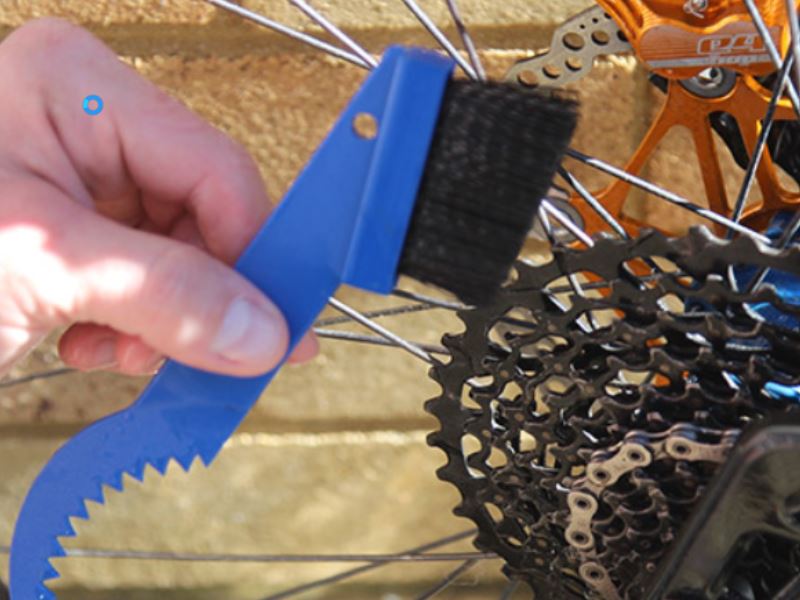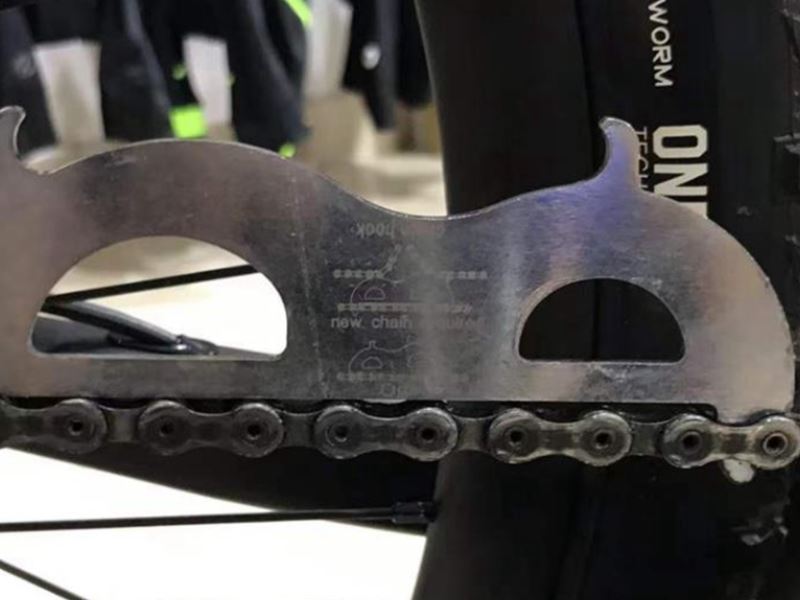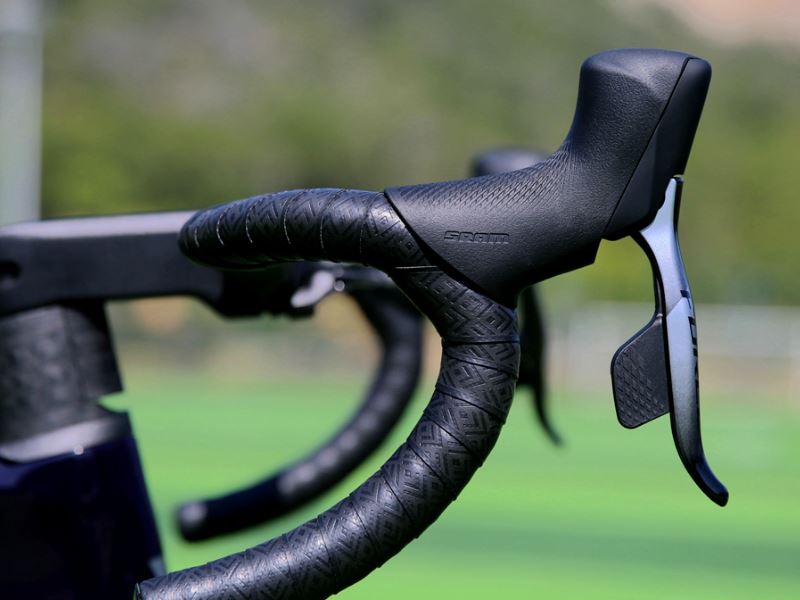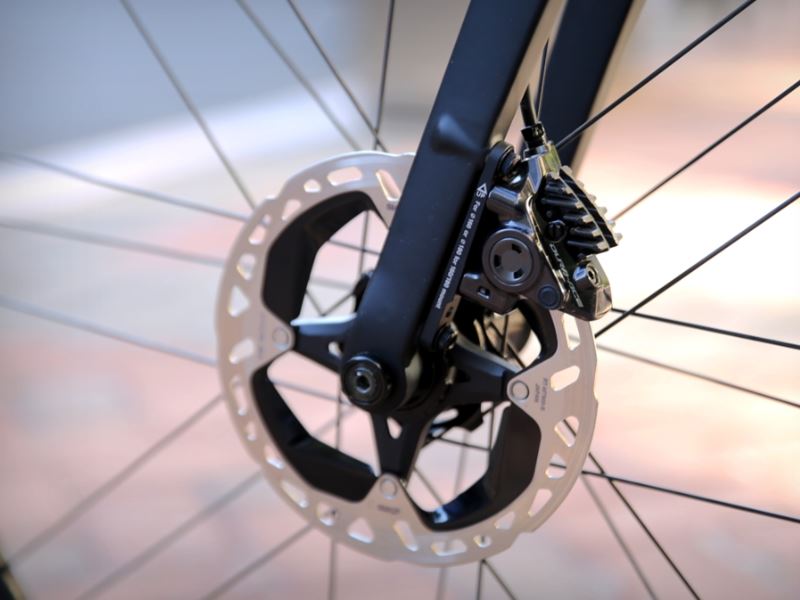by Tiffanybikes
Share
by Tiffanybikes
Share

Keeping your drivetrain clean is one of the easiest and most cost-effective ways to keep your bike running smoothly and extend the life of your expensive components. It should be done regularly as part of the maintenance, if you experience any squeaking or rustling while pedaling, or if the chain gets louder when running, then it’s time to give the drivetrain a cleaning service.
Usually before cleaning and maintenance, the things we need to prepare are as follows:
- Bike Cleaner
- Chain degreaser
- Chain washer
- Chain oil
- Rags
- Brushes
Usually, the appearance of the bicycle is not particularly dirty, but the oil staining on the transmission system are easy to stick to sand and gravel dust particles. The other is riding in mud or a lot of loose soil and gravel, so be sure to rinse the entire bike thoroughly first until there are no mud and sand particles.
After the frame part is cleaned, the transmission part is often the most difficult to deal with. The first step in cleaning the transmission system is to spray the chain and flywheel with chain degreaser first, avoiding the front and rear derailleurs as much as possible. Prevents degreaser from cleaning grease from the front and rear derailleur pulleys. Special attention is that it must not be sprayed on the brake system.
Then use a longer special brush to brush off the dirt on the chain, flywheel, disc and pulley. These brushes can be purchased online, with the caveat that it’s best to buy a harder brush.
Of course, if there is a dedicated chain washer, it will be more convenient. You can pour the degreaser into the groove of the chain washer. The chain is passed through the chain washer, and then the chain is continuously rotated, and the chain washer will remove the oil from the chain.
After cleaning the dirt on the transmission system, it is necessary to rinse the degreaser from the disc, flywheel and chain with cleaning agent. Otherwise, the presence of the degreaser will affect the lubrication effect and seriously affect the work efficiency. At the same time, use the cleaning agent to clean the rear derailleur, front derailleur and chainring, and then rinse them.
Air dry or blow dry with an air gun, a process that is often overlooked. It is important to let the chain dry before starting to apply chain oil. It is recommended to knock the bicycle on the ground a few times to remove some of the remaining water stains, and then put it in the sun for a while. Of course, you can use an air gun to dry it if you can. Then if you are indoors, you can wipe it repeatedly with a lint-free towel.
After the transmission system is clean, it is the easiest time to check the chain, flywheel, and disc for problems. Check the chain wear, whether there is any breakage, and whether the flywheel and disc are seriously worn. And try to turn the chainring to check whether the shifting can run smoothly and accurately shifting. If you encounter the above situation, it needs to be replaced or repaired in time.
After cleaning and drying, the next step is oiling. Choosing a suitable lubricant can prolong the life of the transmission system. There are two kinds of lubricating oils commonly found in our market, one is wet chain oil and dry chain oil. This mainly depends on your own bike scene. When encountering wet weather or muddy mountain roads, it is best to choose wet chain oil. Wet chain oil can provide better durability, but the disadvantage is that wet chain oil is easy to stick to dirt such as sand, gravel, dust, etc., forming sludge that makes the chain easy to get dirty, and it is relatively difficult to clean.
Dry chain oil is more suitable for use in sunny weather or road driving. Using dry chain oil will form a protective film on the surface of the chain, but this protective film will not attract dirt. The disadvantage is that the durability of dry chain oil is not so good, and in rainy and wet weather, it will be washed away quickly and lose its lubricating effect.
The “out-of-stock tide” brought about by the epidemic has made it difficult to find a bike in the cycling circle. Even if some brands can order a bike, the delivery time varies from a few months to more than half a year. There are many bike fans who can’t wait to turn their attention to […]
Whether you’re a big cyclist or a novice cyclist, who hasn’t made some mistakes on the bike? For example, when the new bike is installed, the vehicle accessories are installed incorrectly, the equipment model is not matched when the accessories are upgraded, the fault judgment is wrong, and there is wasted effort in disassembly and […]
With the full popularity of the disc brake system for road bikes, the road bike market has completely resolved the debate between disc brakes and rim brakes. It can be said that disc brakes have completely taken over the rim brakes. But in road disc brakes, there is another debate, so is it better to […]
Today, most mountain bikes on the market are equipped with front fork shock absorbers, and even many gravel bikes are equipped with micro-travel shock absorbers in order to cope with more complex road conditions. There is enough suspension travel on a bicycle to measure the bumps that the bicycle can absorb, so what kind of […]



